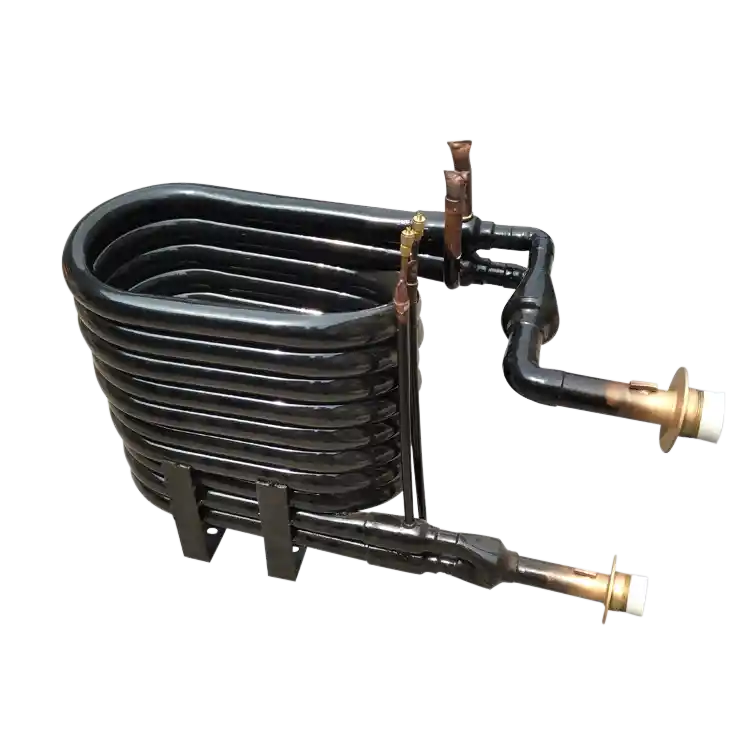Introduction
Tube drawing is a critical process in the fabrication of coaxial heat exchangers. This article explores the intricacies of tube drawing and its significance in producing high-quality tubes for optimal heat transfer performance. By delving into the details of tube drawing, manufacturers can improve the efficiency and effectiveness of coaxial heat exchangers.
1. Understanding Tube Drawing
Tube drawing is a manufacturing technique used to produce seamless tubes with precise dimensions and improved mechanical properties. The process involves pulling a tube blank through a die to reduce its diameter while maintaining its length. This section delves into the various aspects and considerations involved in tube drawing for coaxial heat exchangers.
1.1 Tube Drawing Materials
The choice of material for tube drawing depends on factors such as thermal conductivity, corrosion resistance, mechanical strength, and cost-effectiveness. Stainless steel, copper, and titanium are commonly used materials in tube drawing for coaxial heat exchangers.
1.1.1 Stainless Steel
Stainless steel is renowned for its excellent corrosion resistance, high-temperature strength, and durability. Different stainless steel grades are employed in tube drawing based on their specific properties. The following table provides a comparison of commonly used stainless steel grades:
| Stainless Steel Grade | Corrosion Resistance | Temperature Range |
|---|---|---|
| 304 | Excellent | Up to 870°C |
| 316 | Excellent | Up to 925°C |
| 321 | Excellent | Up to 870°C |
1.1.2 Copper
Copper is prized for its exceptional thermal conductivity, making it an ideal material for applications requiring efficient heat transfer. Different copper alloys find application in tube drawing for coaxial heat exchangers. The following table presents a comparison of commonly used copper alloys:
| Copper Alloy | Thermal Conductivity (W/m·K) | Corrosion Resistance |
|---|---|---|
| C11000 Electrolytic Tough Pitch Copper | 390 | Excellent |
| C12200 Phosphorus-Deoxidized Copper | 380 | Excellent |
| C70600 Copper-Nickel Alloy | 29 | Excellent |
1.1.3 Titanium
Titanium possesses exceptional strength-to-weight ratio, corrosion resistance, and high-temperature stability. It finds application in specialized coaxial heat exchangers operating in demanding environments. The following table illustrates commonly used titanium grades in tube drawing:
| Titanium Grade | Corrosion Resistance | Temperature Range |
|---|---|---|
| Grade 2 | Excellent | Up to 400°C |
| Grade 7 | Excellent | Up to 300°C |
| Grade 12 | Excellent | Up to 450°C |
1.2 The Tube Drawing Process
The tube drawing process comprises several stages, including tube preparation, drawing, and finishing. Each stage contributes to the final quality and performance of the tube.
1.2.1 Tube Preparation
Before the drawing process, the tube material is typically subjected to annealing or heat treatment to enhance its ductility and eliminate any residual stresses. This preparation ensures optimal material properties during the drawing process.
1.2.2 Drawing Process
The drawing process involves pulling the tube blank through a die to reduce its diameter while maintaining its length. The process is typically performed in multiple passes, with each pass incrementally reducing the tube’s diameter and wall thickness. This gradual reduction ensures uniformity and control over the final dimensions.
1.2.3 Die Design and Lubrication
The design of the drawing die plays a crucial role in achieving the desired tube dimensions and quality. Factors such as die angle, reduction ratio, and lubrication are carefully considered to minimize friction, prevent material defects, and maintain dimensional accuracy.
1.3 Advantages of Tube Drawing
Tube drawing offers several advantages in the fabrication of coaxial heat exchanger tubes:
- Dimensional Accuracy: Tube drawing enables precise control over tube dimensions, ensuring a perfect fit in the coaxial heat exchanger assembly.
- Improved Mechanical Properties: The drawing process refines the material’s microstructure, enhancing its strength, hardness, and overall mechanical properties.
- Seamless Tubes: Tube drawing produces seamless tubes, eliminating the need for additional welding or joining processes and enhancing the structural integrity of the heat exchanger.
- Enhanced Heat Transfer: The reduction in tube diameter achieved through drawing increases the tube’s surface area, promoting more efficient heat transfer.
Conclusion
Tube drawing is a fundamental process in the fabrication of coaxial heat exchanger tubes, allowing manufacturers to produce high-quality, precisely dimensioned tubes. By carefully selecting materials, optimizing the drawing process, and considering die design and lubrication, manufacturers can enhance the performance, efficiency, and durability of coaxial heat exchangers. The utilization of stainless steel, copper, and titanium in tube drawing enables customization to suit various industrial applications, ensuring optimal heat transfer performance in diverse environments.
| Tube Deburring Techniques | Pros | Cons |
|---|---|---|
| Manual Deburring | – Suitable for complex shapes – Effective for small-scale production |
– Time-consuming for large-scale production |
| Mechanical Deburring | – Efficient for high-volume production – Consistent deburring results |
– Initial investment in machinery required |


